Stringy Moss (Leptodictyum riparium)
Alright, let’s get into it. You’re thinking about adding Stringy Moss to your tank. Good choice. Here’s the deal on this moss:
Natural Habitat: North America and Europe. Typically, it’s chilling by streams or rivers, often in the shade.
Appearance: It’s got this cool “stringy” look. Thin and long. In the water, it moves around like flowing hair, which is kinda mesmerizing.
Adaptability: No fuss here. It’s a champ in different water conditions. New to the aquarium game or a pro? Doesn’t matter. This moss has got you.
Benefits: Besides looking good, it’s a hit with the tiny tank critters. They use it as a hideout and a snack spot.
Unique Fact: Bet you didn’t know this – Stringy Moss can step up your water quality game. By soaking up extra nutrients, it kinda puts algae growth on hold.
Thinking of adding Leptodictyum riparium to your aquarium? Here’s a few things to know that’ll keep this moss happy.
- Related: 12 Best Carpeting Plants For Your Aquarium
- Related: 11 Common + 7 Rare Moss Types
- Related: Top 16 – Background Aquarium Plants
- Related: Top 10 – Aquarium Foreground Plants
Table of Contents
| Fact | Details |
|---|---|
| Scientific Name | Leptodictyum riparium |
| Common Name | Stringy Moss |
| Native Region | North America and Europe |
| Max Size (Approx) | 4 inches (10cm) |
| Light Requirements | Low to Medium |
| Ideal Water Parameters | pH 6.0 – 7.5, Temperature 22-28°C |
| Growth Rate | Medium |
| Tank Placement | Background, Midground, or Attached to Decor |
| Propagation | Fragmentation |
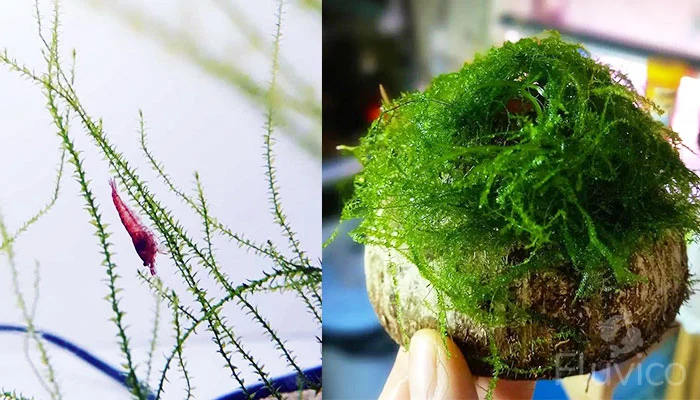
Care & Cultivation Guide
Tank Requirements
Straight to the point:
- Flow: Originally from slower waters. A medium flow in the tank is good, keeps the junk out.
- Filtration: Clean water, happy moss. A solid filter keeps the bad stuff away.
Aquarium Size
No major demands:
- Smaller Tanks: Perfect for a tiny tank setup.
- Larger Tanks: Looks ace as a background or mid-ground feature.
Water Conditions
Keep it simple:
- Temperature: Between 22 to 28°C (72 to 82°F) is good.
- pH Level: Stick to a pH of 6.0 to 7.5.
- Hardness: Soft to medium-hard water. No extremes.
Nutrient Needs
It’s chill, but:
- Fertilizers: A bit of liquid fertilizer? It’ll lap it up.
- Micronutrients: A dab of iron and trace elements? Makes it pop.
Carbon Dioxide (CO2)
CO2 is like a treat:
- Without CO2: It grows, just a tad slower.
- With CO2: Faster growth, looks lush.
Light Requirements
Easy peasy:
- Intensity: Low to medium. Too bright? Algae alert.
- Duration: 6 to 8 hours a day is the sweet spot.
Substrate and Anchoring
It’s a bit different:
- Anchoring: Tie it to rocks or wood. With time, it’ll cling.
- Floating: It can, but it might get messy. Anchoring is smarter.
Pruning & Maintenance
Every now and then:
- Trimming: Snip it to keep it in check.
- Clean-Up: Shake off the junk during water changes or use a soft brush.
Tips for Optimal Growth
Consistent environment, the right spot for lighting and flow, and giving it space are key.
And there you have it. Look after your Stringy Moss, and it’ll give your tank a real glow-up!

Compatibility with Fish, Shrimp & Snails
When you introduce Stringy Moss to your aquarium, you’ll probably wonder who can live alongside this mesmerizing plant. Good news – it’s friendly with many:
- Small Fish: Species like tetras, rasboras, and guppies are ideal. Their gentle nature ensures they won’t damage the moss.
- Shrimps: A favorite among shrimp keepers, Stringy Moss acts as both a food source and hiding place for species like cherry shrimp and crystal reds.
- Snails: Snails, such as nerites and mystery snails, can cohabit peacefully. They can even help by munching on any algae that might grow on the moss.
Remember, aggressive or larger fish that tend to dig or nip at plants might not be the best roomies for Stringy Moss.
Planting Stringy Moss
Taking the plunge to plant Stringy Moss? Here’s how you get started: Method: Attaching Stringy Moss to Decorative Items
- Choose Your Base: Whether it’s driftwood, rocks, or any other aquarium-safe decorative item, ensure it’s clean.
- Preparation: Separate your moss into manageable portions. Don’t go too small; a bit of volume helps.
- Attachment: Using aquarium-safe thread, fishing line, or even rubber bands, gently tie the moss onto your chosen base. Over time, the moss will naturally anchor itself using its rhizoids.
- Positioning: Place the now-anchored moss in your desired location in the tank. Remember, it needs adequate light and a bit of water flow.

How to Propagate Stringy Moss
Propagation is just a fancy word for “let’s make more of this!”
- Trimming: Start by trimming some healthy strands from your established moss.
- Preparation: Just like when you’re planting, divide these strands into reasonable portions.
- Replanting: You can either let these new portions float (they’ll grow, but slower and might get tangled) or anchor them to new bases.
- Growth: In a few weeks, with proper care, you should see these new portions flourish and expand.
Propagating Stringy Moss is as simple as that. Before you know it, you might have enough to share with fellow aquarium enthusiasts or even set up another moss-themed tank!

Common Challenges
While Stringy Moss is a hardy plant, like all living things, it’s not immune to challenges. Let’s explore some common ones and how to tackle them.
Yellowing of Strands
When your Stringy Moss begins to turn yellow, it’s like your plant’s way of sending an SOS. Here’s why it might happen:
- Nutrient Deficiency: Lack of essential nutrients can lead to yellowing. Consider adding a balanced liquid fertilizer to your aquarium.
- Lighting Issues: Too much light can bleach the moss, turning it yellow. Check your lighting duration and intensity.
Solution: Regularly monitor water parameters, ensure adequate nutrient levels, and adjust lighting as necessary.
Browning or Dullness
No one likes their plants looking gloomy. If your moss is going brown or looking lackluster:
- Insufficient Light: Maybe your moss isn’t getting its daily dose of photosynthesis. Ensure it receives consistent, adequate lighting.
- Poor Water Quality: Built-up toxins or chemicals can cause browning. Regular water changes and a good filter can be your best defence.
Solution: Evaluate and adjust your lighting setup and maintain a consistent water-change routine to keep toxins at bay.
Occurrence of Dark Spots
Dark spots can be alarming, but let’s pinpoint their cause:
- Algae Overgrowth: Dark patches on your moss could be algae making a move. Too many nutrients or excessive light can be culprits.
- Burns: Sometimes, if a fertilizer or chemical dose is too high, it can “burn” the moss, leading to dark spots.
Solution: Adjust your aquarium lighting, ensure a balance of nutrients, and always introduce chemicals or fertilizers as per recommended dosages.

Considering Stringy Moss for Your Aquarium
Stringy Moss is more than just a decorative plant; it’s an eco-system enhancer, a sanctuary for small critters, and a joy for the aquarist. If you’re thinking about adding it to your underwater world, remember:
- Adaptability: It’s versatile, fitting seamlessly into various aquarium setups.
- Care: While it’s low-maintenance, a little attention can make it thrive.
- Rewards: Apart from its visual appeal, it can improve water quality and offer shelter to inhabitants.
In short, if you’re aiming for an aquarium that’s both beautiful and balanced, Stringy Moss is definitely worth considering. Dive in, give it a try, and enjoy the tranquil beauty it brings to your aquatic space.
Expert Insights on Stringy Moss
To provide a deeper understanding of stringy moss, we collaborated with Leptodictyum riparium expert Charles E Williams. With over 25 years of experience in aquatic botany, Williams shared his insights on the optimum conditions for stringy moss growth and its benefits in maintaining a balanced ecosystem with regards to invertebrates.
His expertise sheds light on the practical ways to care for and maintain stringy moss, adding a layer of credibility to the information shared in this piece. Many of his expert tips and knowledge are shared here in this article.
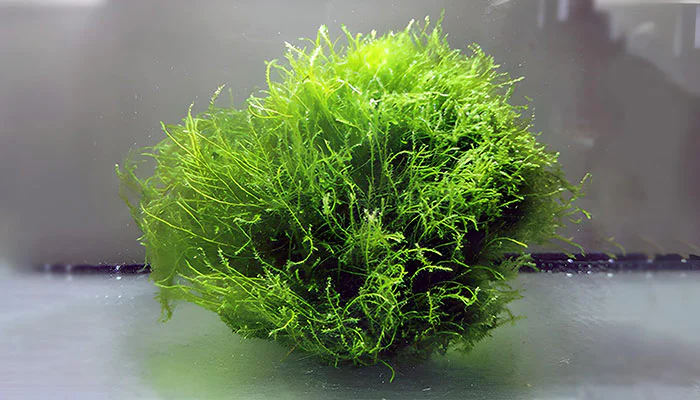
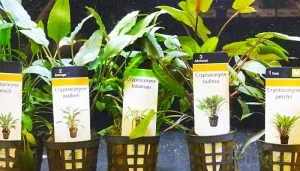
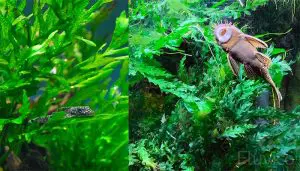
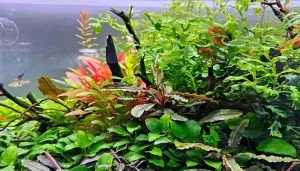
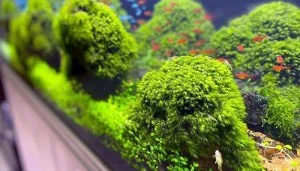


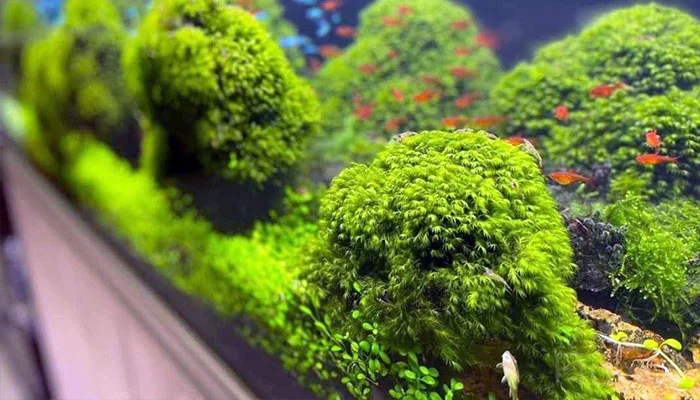
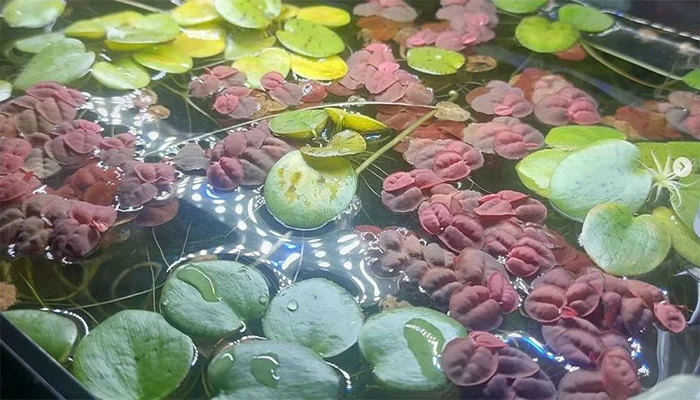
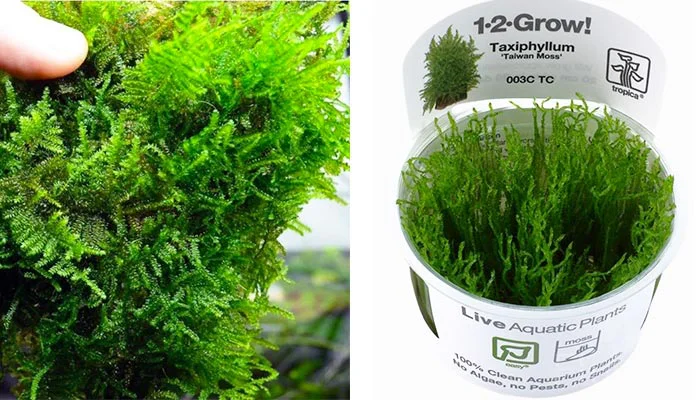

Love Stringy Moss? Have any Stringy Moss Questions? Comment below and myself or Dan will be happy to help : )